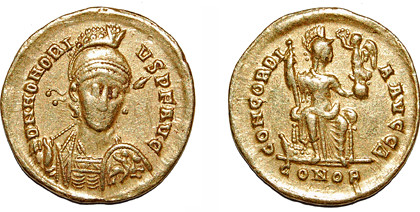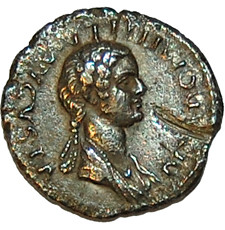
PREV ARTICLE
NEXT ARTICLE
FULL ISSUE
PREV FULL ISSUE
THE 1996 TREASURE ACT
An article on the UK's Culture 24 site interviews Finds Liaison Officer Kurt Adams on "the coins, treasures and daggers discovered on Gloucestershire and Avon's archaeological lands and riverbanks". Here are some images and an excerpt on the country's treasure laws.
-Editor
A person came in to Bristol Museum, realised he’d made quite a find and just wanted to get it recorded. He was a metal detectorist: it was found on ploughed land. About 80 percent of our finds come from detectorists, but not always – sometimes people have been digging their back garden or have gone field walking, looking for pottery or flint, things like that. The legal perspective is that anything you find is the property of the landowner. As long as you’ve got permission from them to remove the finds then that’s fine. We assume people have got permission: we can’t go checking everyone up. If it’s not treasure we simply give it back to them. We borrow it for a little while so we can accurately record it. In many cases I research them as well, going through the books to make sure we’ve got the right dates and information. We also photograph it.

We assume it’s the only time an archaeologist is going to see it, so you have to get as much information as possible. If it’s treasure it falls under the 1996 Treasure Act. You’ve got very specific criteria about things that aren’t treasure. With coins, if it’s gold or silver there’s got to be two or more of them, and they’ve got to be over 300 years old. If it’s copper alloy there have got to be ten or more of them. If it’s prehistoric any part of it can be gold or silver to make it treasure. The great thing about the Treasure Act is that it’s trying to keep some of the best artefacts in the hands of the nation. A great example of where the system failed the nation, if you like, was with the cavalry helmet in Cumbria. That’s not treasure, but it’s an enormously important artefact nationally. But because we weren’t able to protect it, it just got sold into private hands. The whole aim of the Act is to ensure that these really important items are kept in the national collections. Because they’re in a museum they stay in the public domain.” To read the complete article, see: Festival of Archaeology 2014: Roman gold coins and daggers of war in the west (www.culture24.org.uk/history-and-heritage/archaeology/art491102-Festival-Archaeology-Roman-gold-coins-daggers-war-west)

Wayne Homren, Editor The Numismatic Bibliomania Society is a non-profit organization promoting numismatic literature. See our web site at coinbooks.org. To submit items for publication in The E-Sylum, write to the Editor at this address: whomren@gmail.com To subscribe go to: https://my.binhost.com/lists/listinfo/esylum All Rights Reserved. NBS Home Page Contact the NBS webmaster 
|
